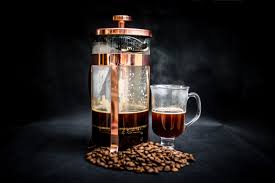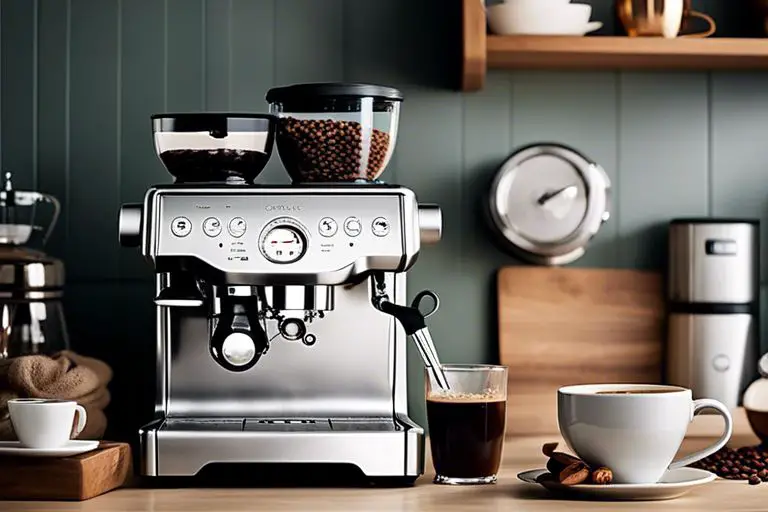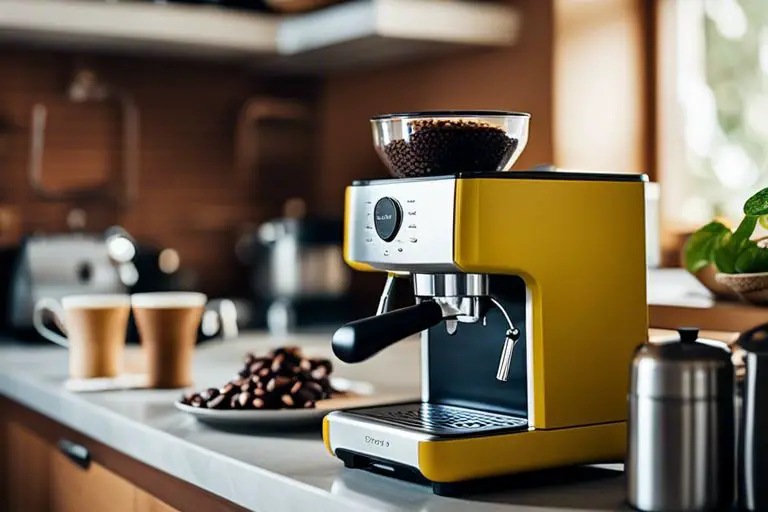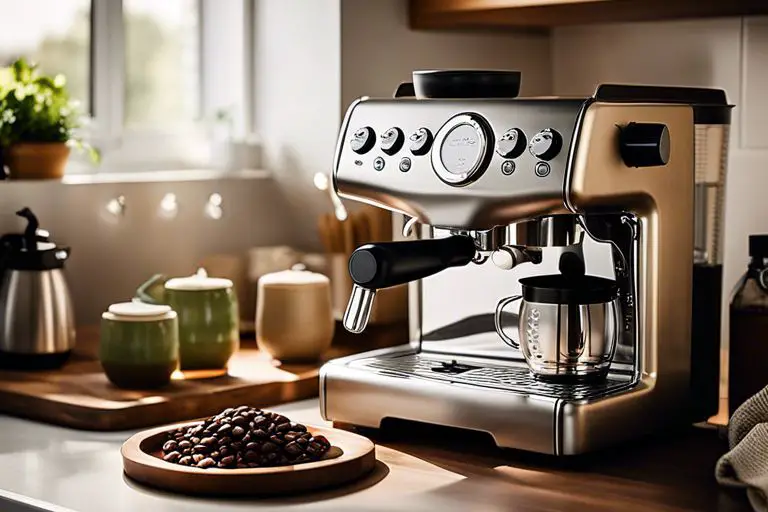If you want to drink a quality cup of coffee but are on a budget then there is no better way to combine quality with value than learning how to make coffee in a French Press or Cafetiere.
We will show you how to save £3 per day by not going to the local coffee shop but still get a great cup of coffee without having to fork out hundreds of pounds on a coffee machine.
First things first though.
What is the difference between a French Press and a Cafetiere?
Nothing. Its two different words for exactly the same item. The use of each one is more popular depending where in the world you live.
In Europe we tend to use Cafetiere and if you are American then they tend to use the word French Press.
Which one is correct? We are going to stick our neck out and go with Cafetiere and for one simple reason. “Coffee Maker” in French is “Cafetiere”.
Bodum are also the biggest brand out there that make Cafetiere’s and they don’t call any of them French Press but they do call them all Coffee Maker’s which in French is of course “Cafetiere”.
Cafetiere it is then!
Is Cafetiere coffee better than instant?
One of the key reasons why you should consider buying a cafetiere is that you will be creating a drink that will make you wonder how you ever drank a cup of instant coffee and will probably ensure that you never do again.
Coffee made with a Cafetiere is MILES better than instant coffee for one main reason. Its fresh. If you think about it, even outside of the coffee world fresh is always better. Any food you ever eat always tastes better if it is cooked or made from fresh rather than frozen.
Instant coffee is freeze dried after being ground down from whole beans before being added to your jar and given a shelf life of a year or so.
Cafetiere coffee uses fresh whole coffee beans that are ground down and not frozen but brewed in the cafetiere as soon as possible after the beans are ground for the most wonderful flavour that gets released from the freshly ground coffee beans.
What coffee should you use in a Cafetiere?
Coffee is very much a personal thing and depends on each person’s individual palette. Some people like it strong and other prefer it mild. There is no right or wrong, it just depends on what you personally prefer.
To make is even more confusing depending on the brand or where you buy your coffee from it will be graded from 1-5 or 1-10 or even 3-7 with low being mild and high being strong. There is no industry standard.
If you are or have been an instant coffee drinker then will most likely have been drinking the same variety for years, something like Nescafe Gold or another overpriced brand.
Our advice with coffee for your Cafetiere is to try as many different types of coffee as you can over a long period of time before you settle on maybe two or three that you really like.
I never stop trying different coffee beans and sometimes you stumble across something amazing at a very reasonable price.
If you are not sure where to start then these are some of the most highly rated coffee beans on the market today.
The most important thing in order to get the maximum enjoyment from your Cafetiere is to buy fresh whole coffee beans and grind them yourself just before adding the freshly ground coffee straight into the Cafetiere.
How to grind coffee beans for a Cafetiere
The secret to incredible coffee with a cafetiere is to buy whole coffee beans as close to the date that they were roasted as possible.
This goes against the grain of looking at the “use by” date on all food products that you buy. In fact, if you find any coffee beans that are within about 4 months of reaching their use-by date you should not even consider buying them.
Once vacuum packed, coffee beans will commonly be given a shelf life of about 1 year but to get the best possible flavour you should be buying beans that have been roasted in the last 4 weeks.
It’s unlikely that you will find beans with a “roasted on” date in the likes of Tesco, Salisbury’s or Asda but you will in the likes of M&S or Waitrose. Well worth a look as it definitely makes a big difference to the flavour.
Fresh coffee beans are very important but just as important is how finely the beans are ground. Different levels of grind work better for different types of coffee machine.
For espresso the grind should be very fine, almost powdery but for a cafetiere the grind size needs to be much coarser in order to allow the natural oils in the coffee to fully permeate with the water.
Pre ground coffee is ok but it will not be as good because it has not been freshly ground and it also tends to come too finely ground for Cafetiere’s.
Grinding your own beans is super simple. You have 3 choices.
Manual coffee grinders require no electricity at all and operate like a pepper mill where you add the coffee beans and turn a handle. You need to apply a bit of elbow grease and a couple of minutes later you will have enough beans for 2 or 3 decent sized mugs of coffee.
This budget manual coffee grinder represents really good value for money and comes with a glass pot to store your coffee beans.
If that seems like too much work then the next option (and most cost effective for Cafetiere coffee) is an electric blade coffee grinder. For less than the price of the cafetiere itself these will chop up your beans to just the right level of coarseness. They tend to operate on a pulse basis so you just add the beans and press down on the lid for a few seconds at a time until you get the level of fineness you are happy with. After a few goes you’ll have it just right.
This Kabalo blade coffee grinder is a good example of how cheaply you can grind your own beans.
If you really want to push the boat out and get the grind as precise as possible then you can take a look at a burr grinder. With these types of grinder you can select the from a dial how fine or coarse you would like your coffee to be and then when you have it just right it will do it exactly the same every time.
Burr grinders also crush the beans in between two disks instead of chopping them up with blades making the grind size more consistent and accurate.
You can pay hundreds for a burr grinder if you want but the Krup’s GVX231 Expert burr grinder is a really good value for money example that will not break the bank.
How do you brew coffee in a cafetiere?
First of all, make sure your cafetiere is super clean. Any residual coffee grounds from the last use will make the next brew taste nasty and bitter.
Grind your coffee coarsely just before brewing and then you are good to go.
Pre heating the cafetiere helps to keep the coffee hotter for longer so pour in some boiling water until it is about a quarter full, push the plunger down, give it a bit of a swirl and discard the water.
You need about 1 heaped tablespoon of ground coffee for every cup or mug that you want to make. Pour the ground coffee into the cafetiere and give it a bit of a shake so that the coffee is evenly distributed across the bottom.
Add approximately 150ml of close to boiling water for every tablespoon of coffee added. This will produce a medium to strong flavoured coffee. This is something that you can play around with to suit your own taste but these measurements will work well for most people.
Give it a stir with a wooden or plastic spoon (don’t use a metal spoon as this could break the glass) to get the coffee permeating throughout all of the water.
Leave to brew for 4 minutes. After 4 minutes press the plunger down slowly but firmly. When the plunger reaches the bottom you are ready to enjoy a delicious freshly brewed cup of coffee.
What is the best cafetiere to buy?
The most important thing when deciding to buy a cafetiere is to never buy one based on the advertised cup size. It’s always wrong on the high side.
Buy one based on the stated volume capacity. For example, a cafetiere advertised as a 3 cup will only hold 350ml of coffee and for a lot of people that will be little more than 1 mug. So unless you are only making coffee for yourself on a regular basis always go for an 8 cup which holds 1 litre of coffee but in reality will do about 4 mugs of coffee and it also gives you the flexibility make as few as many cups as you like.
Next you choose from a glass container to hold the coffee or a stainless steel opaque cafetiere. One of the most common issues with the more popular glass cafetieres is that they are easy to break. If you go for a stainless-steel version then if you knock it over or it falls to the floor it won’t smash everywhere.
If you are going to go for glass then we would recommend the Bodum Chambord Cafetiere which is not the cheapest but it is made of borosilicate glass which is tougher than standard glass and resist to quick changes in temperature making it less likely to crack or break.
Bodum are one of the most trusted brands in the cafetiere market with its strong and durable build quality you can expect the Chambord to last at least 5 years.
For a non-branded version take a look at the Rayett 1000ml stainless steel cafetiere which has a similar look and specification as the Bodum Chambord but you pay less because it’s not a famous brand.
For something with a more modern feel and a full non-glass stainless steel body you will be hard pressed to find better value for money than the Topelek 1000ml Cafetiere
If you stick to the 1000ml capacity versions and steer away from the very cheap ones because they will just corrode or break quickly you won’t go far wrong with one of the three selections above for quality and value.
Here is a short video from renowned coffee expert James Hoffman on how to make a great tasting cup of coffee using a cafetiere:




